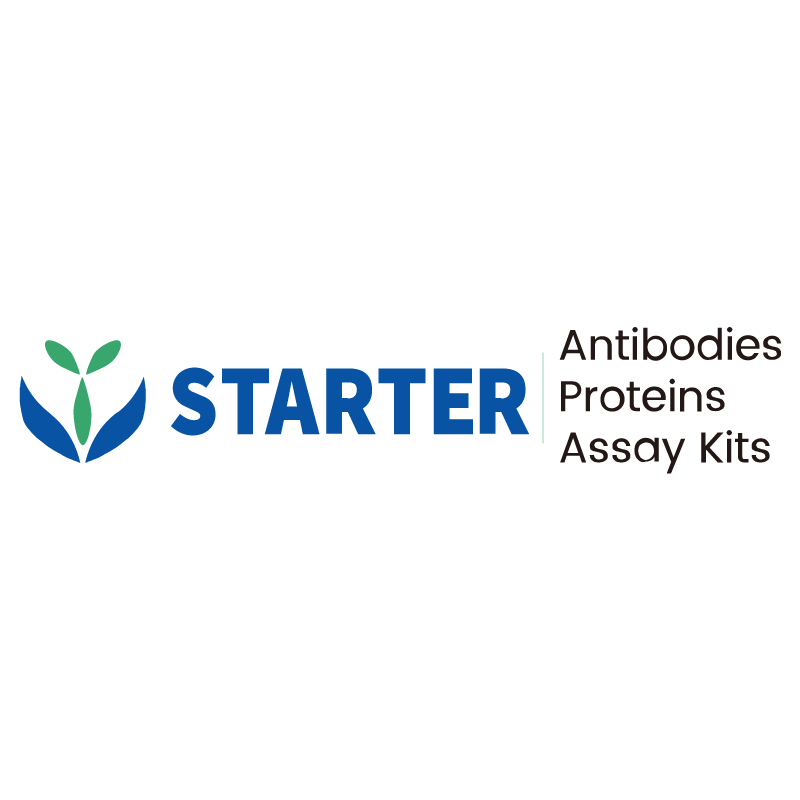WB result of PAD4 Recombinant Rabbit mAb
Primary antibody: PAD4 Recombinant Rabbit mAb at 1/1000 dilution
Lane 1: mouse spleen lysate 20 µg
Secondary antibody: Goat Anti-rabbit IgG, (H+L), HRP conjugated at 1/10000 dilution
Predicted MW: 74 kDa
Observed MW: 70 kDa
Product Details
Product Details
Product Specification
| Host | Rabbit |
| Antigen | PAD4 |
| Synonyms | Protein-arginine deiminase type-4; Peptidylarginine deiminase IV; Protein-arginine deiminase type IV; Pad4; Pdi4; Padi4 |
| Immunogen | Synthetic Peptide |
| Location | Cytoplasm, Nucleus |
| Accession | Q9Z183 |
| Clone Number | SDT-2416-3 |
| Antibody Type | Recombinant mAb |
| Isotype | IgG |
| Application | WB, IHC-P |
| Reactivity | Ms, Rt |
| Purification | Protein A |
| Concentration | 0.5 mg/ml |
| Conjugation | Unconjugated |
| Physical Appearance | Liquid |
| Storage Buffer | PBS |
| Stability & Storage | 12 months from date of receipt / reconstitution, 4 °C as supplied |
Dilution
| application | dilution | species |
| WB | 1:1000 | Ms |
| IHC-P | 1:500-1:1000 | Ms, Rt |
Background
Protein-arginine deiminase type-4 (PAD4) is a human enzyme encoded by the PADI4 gene, located on the short arm of chromosome 1. PAD4 is a calcium-dependent enzyme that catalyzes the conversion of arginine residues to citrulline in proteins, a process known as citrullination. It is primarily expressed in white blood cells such as granulocytes and monocytes, and can also be found in the nucleus. PAD4 plays a crucial role in the formation of neutrophil extracellular traps (NETs), which are involved in the immune response against pathogens. However, excessive PAD4 activity and NET formation have been implicated in various diseases, including rheumatoid arthritis, multiple sclerosis, cancer, and cardiovascular diseases. PAD4 also influences gene expression by deimininating histones, and its dysregulation can impact cellular processes like apoptosis and differentiation. Due to its involvement in multiple disease pathways, PAD4 has become a promising target for therapeutic interventions.
Picture
Picture
Western Blot
Immunohistochemistry
IHC shows positive staining in paraffin-embedded mouse spleen. Anti-PAD4 antibody was used at 1/1000 dilution, followed by a HRP Polymer for Mouse & Rabbit IgG (ready to use). Counterstained with hematoxylin. Heat mediated antigen retrieval with Tris/EDTA buffer pH9.0 was performed before commencing with IHC staining protocol.
Negative control: IHC shows negative staining in paraffin-embedded mouse cerebral cortex. Anti-PAD4 antibody was used at 1/1000 dilution, followed by a HRP Polymer for Mouse & Rabbit IgG (ready to use). Counterstained with hematoxylin. Heat mediated antigen retrieval with Tris/EDTA buffer pH9.0 was performed before commencing with IHC staining protocol.
IHC shows positive staining in paraffin-embedded rat spleen. Anti-PAD4 antibody was used at 1/500 dilution, followed by a HRP Polymer for Mouse & Rabbit IgG (ready to use). Counterstained with hematoxylin. Heat mediated antigen retrieval with Tris/EDTA buffer pH9.0 was performed before commencing with IHC staining protocol.
IHC shows positive staining in paraffin-embedded rat lung. Anti-PAD4 antibody was used at 1/500 dilution, followed by a HRP Polymer for Mouse & Rabbit IgG (ready to use). Counterstained with hematoxylin. Heat mediated antigen retrieval with Tris/EDTA buffer pH9.0 was performed before commencing with IHC staining protocol.
Negative control: IHC shows negative staining in paraffin-embedded rat cerebral cortex. Anti-PAD4 antibody was used at 1/1000 dilution, followed by a HRP Polymer for Mouse & Rabbit IgG (ready to use). Counterstained with hematoxylin. Heat mediated antigen retrieval with Tris/EDTA buffer pH9.0 was performed before commencing with IHC staining protocol.


